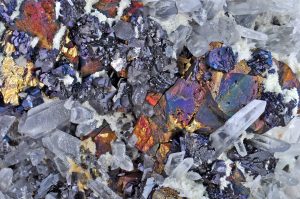The Quad countries — Australia, India, Japan, and the United States — have an opportunity to collaborate and create resilient supply chains that can reduce their dependence on China. The upcoming Quad Foreign Ministers’ Meeting on July 29 in Japan, and the Quad Leaders’ Summit in India will provide the countries an opportunity to put critical minerals front and center on the agenda.
This collaboration is essential for defense production and speeding up the adoption of renewable energy technologies. Currently, China leads the world in the production and processing of many critical minerals, which poses strategic risks for Quad nations.
The first step to meaningful Quad cooperation is highlighting the differences — and overlaps — in what minerals each country considers critical. The two different categories of minerals require a tailored approach. Securing critical minerals that are “unique” to each country, is ripe for intra-Quad cooperation; while strengthening supply chains for minerals that all countries consider critical requires fostering partnerships with other countries.
Defining Criticality
Each Quad country has its national list of critical minerals. Minerals are chosen by factors such as economic importance, supply risk, role in emerging technologies, and strategic value.
Australia has a list of 31 critical minerals, and another five “strategic minerals” that have the potential for moving up to critical, depending on supply chain pressures. The list is updated every two years. India’s Ministry of Mines announced its list of 30 critical minerals in 2023. The critical minerals list in Japan was initially released by the Ministry of Economy, Trade and Industry in 2014 and has since been updated several times. It currently includes 35 minerals. The United States has multiple lists issued by different departments, but the most comprehensive list of 50 minerals is issued by the United States Geological Survey.
Uniquely Critical
Each country’s dispensation means that there are 36 minerals — 14 for Japan, 11 for the United States, seven for India, and four for Australia — that are unique to each country. India’s unique minerals include potash due to its use in fertilizers, whereas the United States has listed aluminum as a critical mineral.
China is the leading producer for 28 of these — 11 for Japan, eight for the United States, two for India, and all four for Australia.
However, for several of these minerals, Quad partner countries are the second largest producer, thereby opening an avenue for building on existing production. For instance, India is the second largest producer of aluminum (behind China), which is critical for the United States and is also a significant producer of barite, which is unique to the U.S. list. While India is already a top import source for barite, strengthening trade can significantly reduce the dependence on China.
The opportunities for Japan to source more from Australia, and the United States are also massive. While these are already being explored through the U.S.-Japan Critical Minerals Agreement, and multiple Australia-Japan free trade agreements, a Quad framework can unify these efforts, and bolster them from a security standpoint.
A Quad-specific critical minerals agreement will allow companies in Quad nations to use existing financing avenues such as the Inflation Reduction Act to build up production. Supporting private technology firms in licensing their technologies or forming joint ventures can also ease the financial risk of high upfront capital investments.
Australia’s Northern Australia Infrastructure Facility (NAIF) is an excellent example of how targeted financial support can successfully secure supply chains. Partnerships can be strengthened by converting mechanisms like the Quad Investors Network into investor consortiums to support financial feasibility of specific critical minerals projects.
By fostering these partnerships, the Quad can reduce its dependency on non-Quad sources and speed up the development of supply chains.
Common Minerals
Apart from the minerals unique to each list, there are 20 minerals common across all lists including graphite, cobalt, tungsten, and gallium among others.
China is the leading producer of 10 of these minerals.
As opposed to unique minerals which require more cooperation amongst the Quad nations, securing these minerals requires fostering meaningful partnerships with other relevant players. For instance, partner countries like South Korea, and Germany are large producers of gallium. Similarly, Mozambique and Brazil have significant production of graphite. Madagascar, Canada and India also have a respectable — and increasing — production capacity.
Creating a mechanism that can support site selection, permitting, environmental social governance (ESG) adherence, and financing among other things will be key. A Quad-specific partnership such as the G7’s Partnership for Global Infrastructure and Investment (PGII) can be used to strengthen investments in non-Quad countries. A dedicated vehicle for critical minerals will assist member countries in the creation of strategic stockpiles and manage shared resources.
To “China-proof” their critical minerals supply chains, the Quad nations must take a two-pronged approach by simultaneously improving intra-Quad partnership, while solidifying trade with other countries.
































